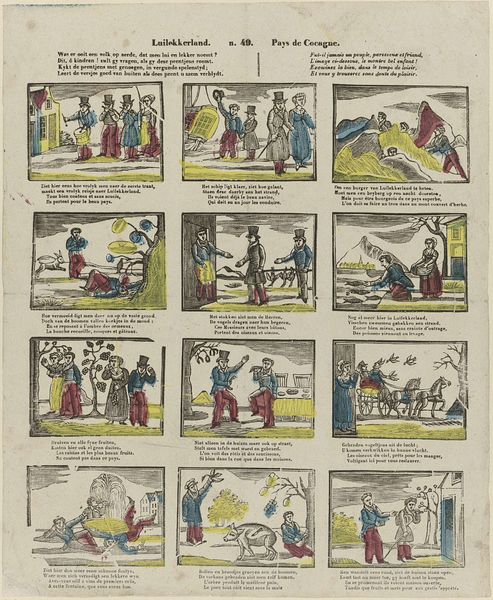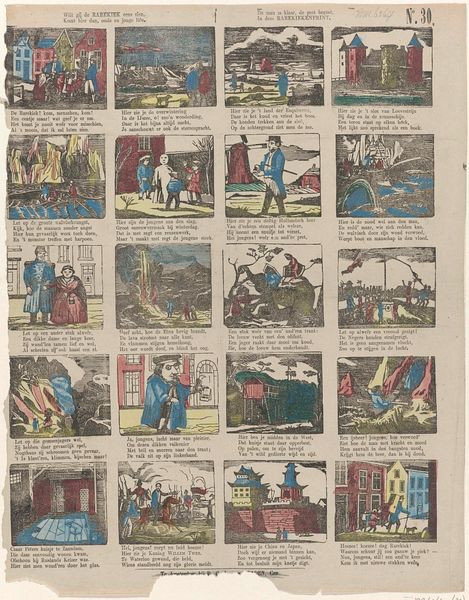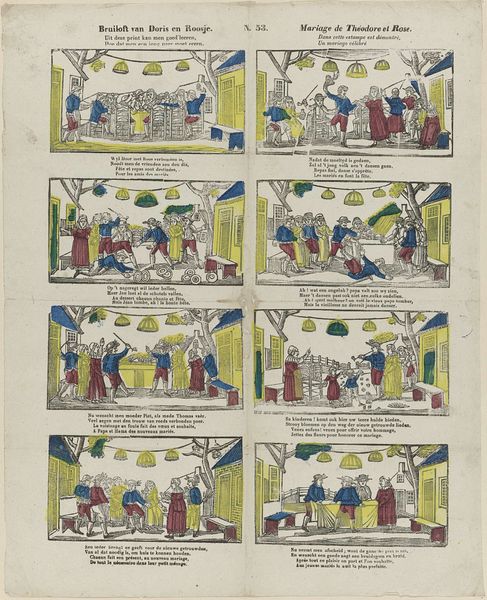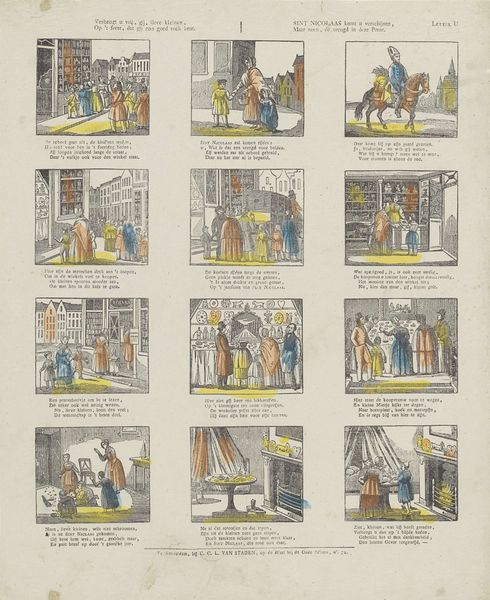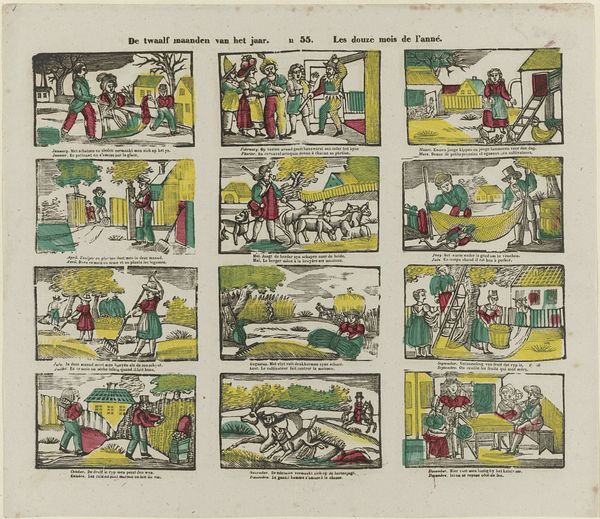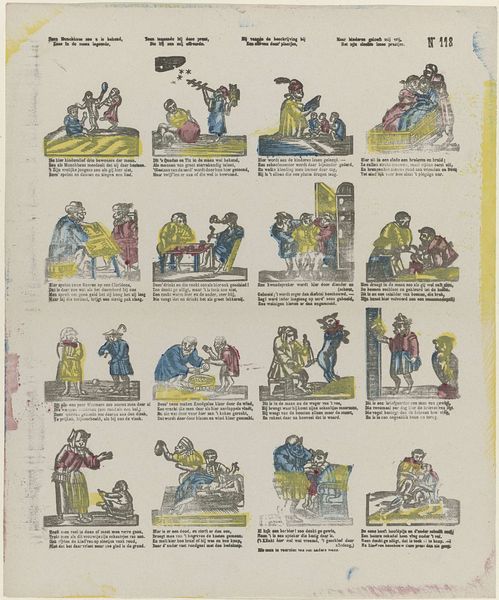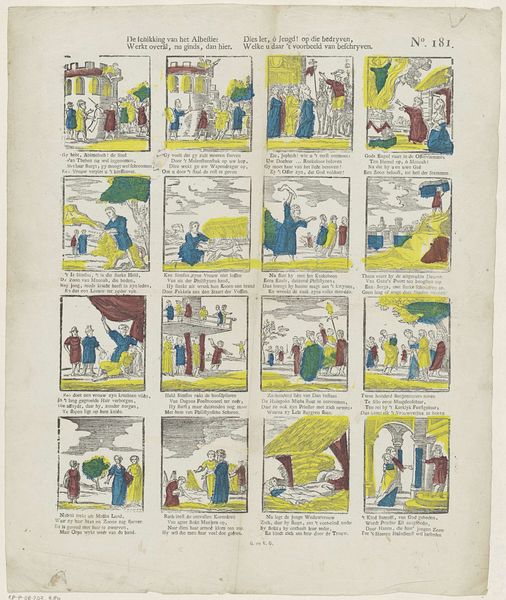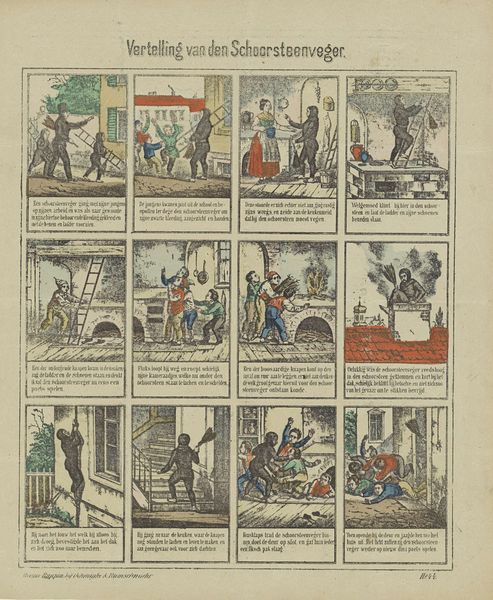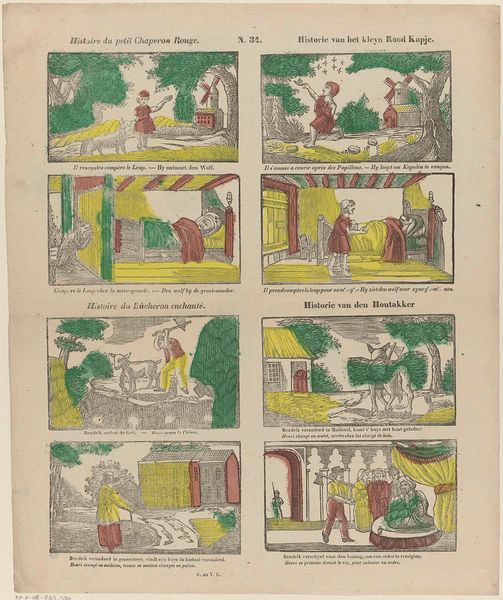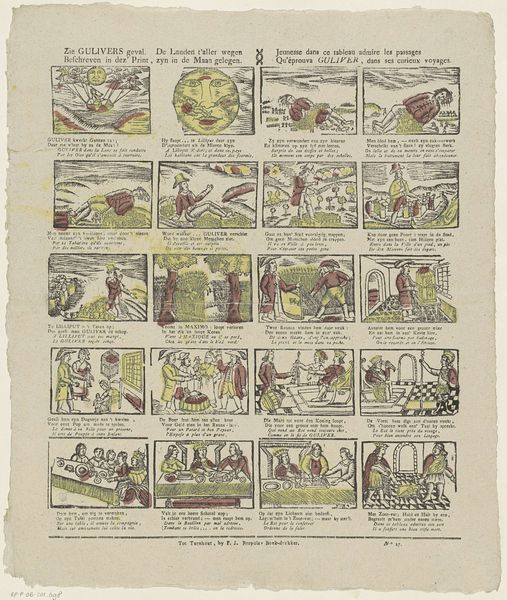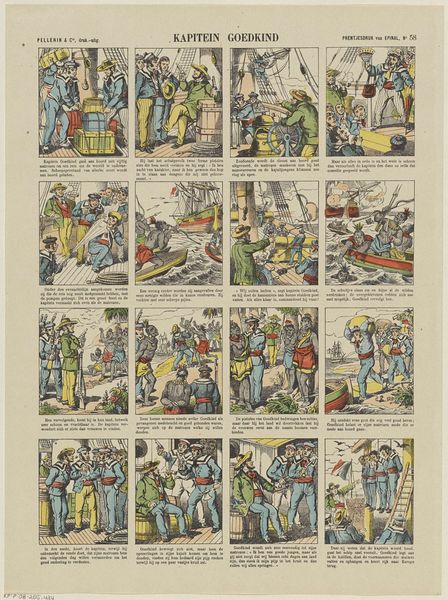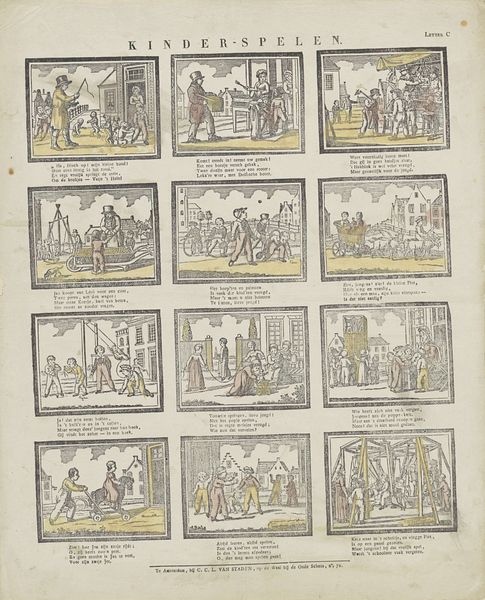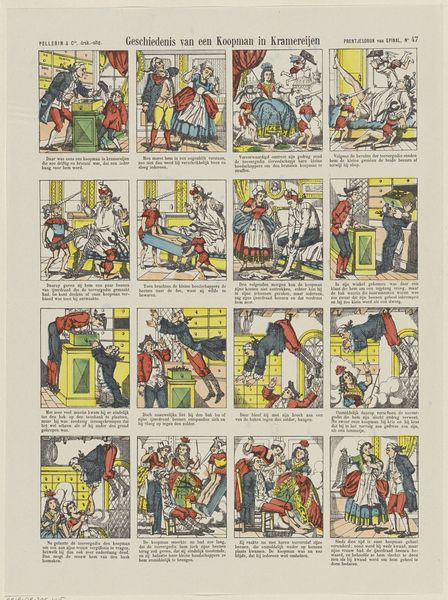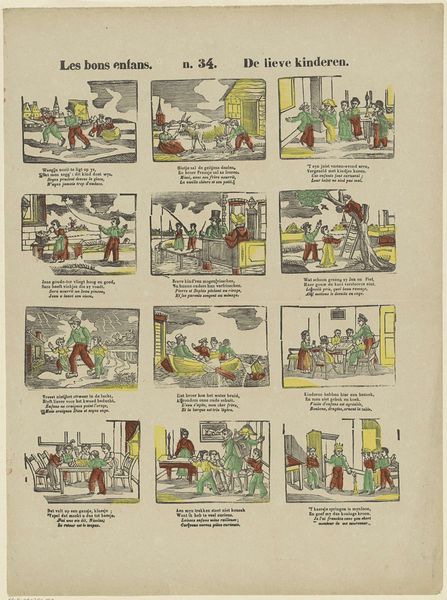
Deez' zes paar schetsen in dit prenttafreel wil toonen, / Wat men van het begin der jaars komt bij te wonen, / Tot aan het eind', en wat in elke maand geschiedt, / Gelijk ge, o jeugd! hier in deez' twaalf maanden ziet 1827 - 1894
0:00
0:00
drawing, print, paper, ink, engraving
#
drawing
#
narrative-art
#
comic strip
#
dutch-golden-age
# print
#
traditional media
#
landscape
#
paper
#
ink
#
folk-art
#
comic
#
cityscape
#
genre-painting
#
engraving
Dimensions: height 381 mm, width 321 mm
Copyright: Rijks Museum: Open Domain
Editor: This is "Deez' zes paar schetsen in dit prenttafreel wil toonen..." made between 1827 and 1894 by M. Hemeleers-van Houter, currently held in the Rijksmuseum. It’s an ink drawing and engraving that’s organized almost like a comic strip. I find the different scenes incredibly charming and quaint, almost like looking through little windows into the past. What structural elements do you find most compelling? Curator: The organization of the pictorial space is indeed of significant interest. Note how the artist uses a grid-like structure, compartmentalizing each month's activities. Each rectangle operates as an individual plane, yet they are inextricably linked through line and form. Consider the repetition of figures, their costumes, and the recurrence of architectural elements. Editor: I see how that creates a sense of rhythm across the whole page. Are there specific panels you find visually stronger than others? Curator: Observe the contrasting textures. The finely etched lines in some squares depict details with clarity, for instance the clothing and houses, while others employ a more generalized approach using bold strokes, perhaps for landscapes and sky. Notice the different color saturations between scenes, ranging from subtle blues and yellows to rich oranges, perhaps to highlight varying climates and tones across the seasons. Editor: So, it’s not just a straightforward narrative, but also a visual exploration of form and color across different seasonal tableaus. How do these different graphic modes enhance its qualities? Curator: Precisely. The graphic modes underscore not only narrative, but structure, tonality, and ultimately, our perception of its holistic aesthetic. These deliberate aesthetic devices effectively transform everyday activities into meaningful components of the image. The visual tension it creates contributes significantly to our cognitive experience. Editor: It’s amazing how much the structure impacts how we perceive its content. Thank you! It gives one much to think about concerning the piece and also broadens ways to interpret the aesthetic components of an image.
Comments
No comments
Be the first to comment and join the conversation on the ultimate creative platform.
